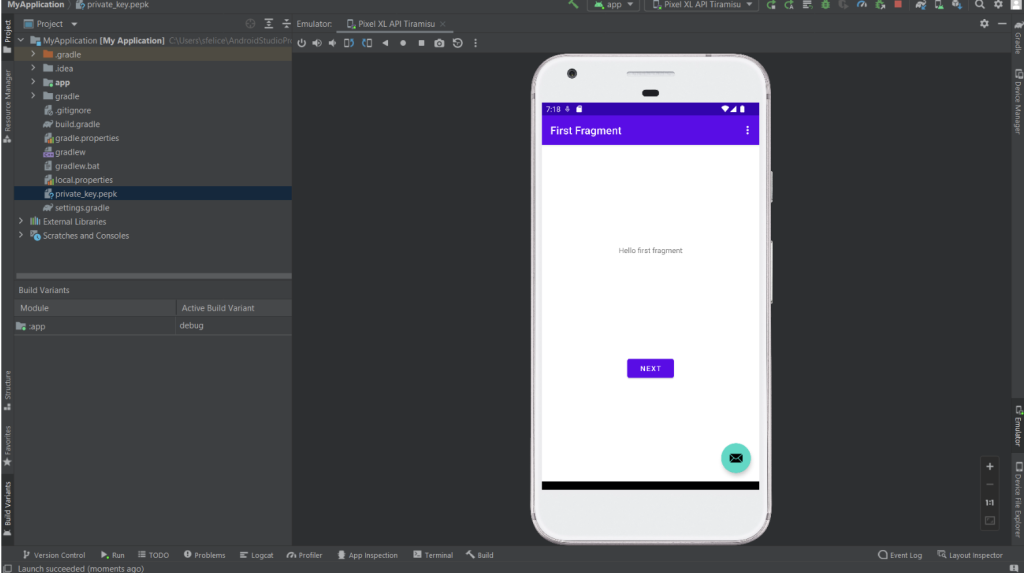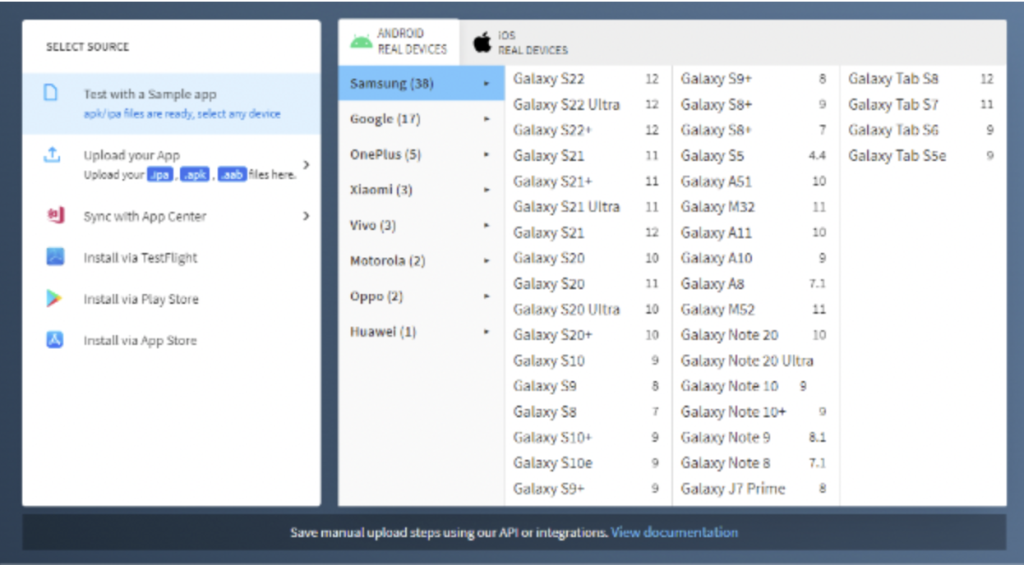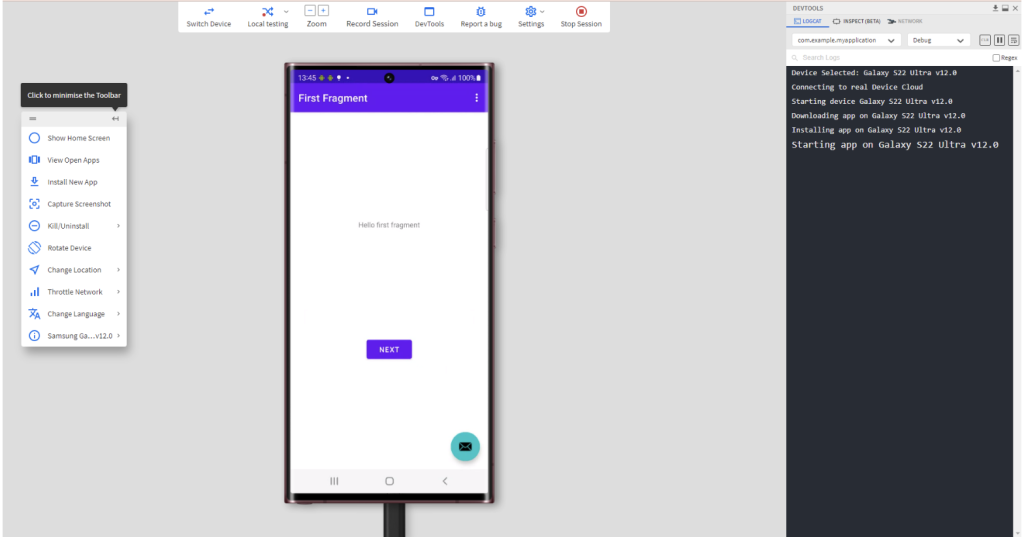
What is Mobile App Testing?
Mobile Application testing is a cycle that each application created for handheld gadgets needs to go through to guarantee a specific degree of value. Before putting an application on the App Store, or the market, it goes through testing.
Application Store has Various names on various working frameworks. For instance, the Application Store is known as the Play Store for all Google or Android-based handheld gadgets. On iOS gadgets, it is known as the Application Store.
Why is Mobile App Testing important?
Desktop apps typically have fewer users than mobile apps. Subsequently, there is a need to test on a more extensive scope of gadgets for producing quality Applications.
Mobile Application advancement lifecycle for the most part will in general be a lot more limited than the others like Work area Applications. Consequently, these applications intensely rely upon Versatile Application testing for their prosperity.
Mobile Applications are tried based on different boundaries like usefulness, ease of use, consistency, execution, security, and UI. This assists in incrementing the overall effectiveness of the Applications on all fronts while additionally expanding the unwavering quality with calculating among clients utilizing them.
Mobile Application Testing assists with:
- Expanded client fulfilment
- Elevates brand picture
- Accomplish a decent return on initial capital investment
- Accomplishing a completely useful application
Stages of Mobile App Testing:
Testing from beginning to end is essential for mobile apps to function properly. Viable start-to-finish testing of Portable Applications comprises the accompanying advances:
Step 1: Process Outlining:
Illustrating every one of the tests to be executed for your Versatile Application is the initial step to be followed. Make a Test Plan with all the utilization cases you might want to test, making sense of the tests and the normal outcome for the run.
Step 2: Choosing test type for Manual or Automated Testing:
Concluding whether a test will be manual or robotized is the subsequent stage to be followed. Tests can be mechanized:
- If a utilization case should be run as often as possible.
- If a test has an anticipated result.
- If tests should be composed for different gadgets, working frameworks, and screen aspects.
- Unit Testing for.
Step 3: Preparing test cases for different user functionalities
Characterizing the cases is the initial step to composing experiments for versatile applications when you conclude which testing type to utilize. There are two options available here:
- Business scenario-based testing: The framework is surveyed according to the Business viewpoint
- Requirements-based testing: Execution of explicit Application highlights is evaluated
The kind of testing you want to conduct also affects how you define the test cases. Application tests are partitioned into two gatherings:
- Functional Testing: Comprises Unit Testing, Incorporation Testing, Framework Testing, Point of interaction Testing, Relapse Testing, and Acknowledgment/Beta Testing.
- Non-functional Testing: Comprises Safety Testing, Volume Testing, Stress Testing, Execution Testing, Burden Testing, Unwavering quality Testing, Convenience Testing, Consistency Testing, and Limitation Testing.
Step 4: Manual Testing: In the Spry Testing structure, it is educated to utilize a mix of both Manual and Robotized Testing for successfully testing Versatile Applications. Manual Testing doesn’t need starting ventures. Thus, it is prescribed to launch a testing run with Exploratory Testing. Monitor every one of the logs of the testing meetings in a Word or succeed record.
There are two different ways QA analyzers test Versatile Applications physically:
- Testing on Emulators or Simulators: Emulators and Simulators are the most established and most broadly involved devices for Versatile Application testing. They are instruments that let you select the cell phone model, impersonate the gadget, and run it on your PC framework. This provides you with a thought of how the versatile application will act when utilized on Genuine gadgets after send-off.
Example: Android Studio has a built-in Emulator
Demo:

Look at that as an application was made in Android Studio (Read about making an Application Group in Android Studio here) to run on an Android Gadget Emulator. When the Application is made, pick the emulator you need and run the code. The accompanying will be the result.
- Testing on a platform that offers Real Devices: Testing on a stage that gives a broad scope of Android and iOS cell phones to test your Versatile Applications on Genuine Gadget Cloud helps in recreating application conduct in genuine client conditions. For manual testing of mobile apps, QA testers can use platforms like BrowserStack, which offers a wide variety of devices.
Only information exchange free of charge and begin testing portable applications right away. The accompanying advances should be followed:
- Transfer the application document you made on the stage
- Select the operating system and Cell phone to test on

Demo:
Look at that as an application was made (you can utilize the very Application that you made in the past segment) with a .aab or .apk expansion to run on the BrowserStack stage. Select the Galaxy S22 Ultra device after the app has been uploaded. The accompanying will be the result.

Step 5: Automated Testing: Dealing with the consistently expanding interest in programming testing can’t be simply overseen by Manual Testing since the time has come consuming. Consequently, organizations depend on versatile test computerization structures too to mechanize tests on a great many genuine gadgets. A portion of the famous versatile testing systems are:

Appium is one of the most broadly utilized open-source portable test computerization systems. It upholds computerized testing of Local and Crossover portable applications. Appium drives Android, iOS, and Windows applications utilizing the Selenium WebDriver Connection point.
It permits analyzers to test scripts in various programming dialects – Python, Java, C#, Ruby, JS, and PHP. It leans toward being an adaptable, cross-stage structure that can be utilized by analyzers to make test scripts for numerous stages utilizing a similar Programming interface.
Supported platforms: iOS, Android
Demo: We should utilize the Application Mechanize component of BrowserStack to demo how to play out the robotized test for a portable application. The example Application can be viewed here. The accompanying will be the result.

- Calabash:

Calabash is a mobile testing framework tool that is open-source and compatible with a variety of languages, such as Java, Ruby, and so on. to test local and a mixture of applications.
Utilizing Calabash, analyzers can compose and execute mechanized acknowledgment tests for Versatile applications. It upholds activities like swipe, turn, tap, and so forth. It has support for the Cucumber structure. Thus, more clear by non-specialized staff.
Supported platforms: iOS and Android
- Selendroid:

Selendroid is known as Selenium for Android. It upholds both Android local and crossover applications as well as versatile web applications. Selendroid lets you look at your app’s user interface right now. It likewise upholds equal execution on various gadgets.
Supported platforms: Mac, Linux, Windows
- XCUITest:

XCUITest Structure is Appium’s essential help for mechanizing local iOS applications utilizing the XCUITest driver. XCUITest is a structure that was intended to make and run UI tests for iOS applications utilizing Quick/Objective C. It is very notable for its quick execution, low flakiness, and simple test of the executives.
Supported platforms: iOS
Step 6: Usability & Beta Testing: The primary goals of usability testing are to determine whether a feature works and is easy to use for application users. Satisfaction, Effectiveness, and Efficiency are the fundamental requirements.
Beta Testing empowers the designers to comprehend which highlights clients will require. This, specifically, assists with molding the bearing the application ought to take from here on out.
Step 7: Performance Testing: Execution testing decides your application’s response and consistency under a particular responsibility. It has a few credits under it:
- Load Testing: Checks how much burden the application can take under ordinary/outrageous circumstances.
- Stress Testing: examines whether the application performs as expected when subjected to excessive stress.
- Stability Testing: examines whether the application can function effectively over longer periods under normal load.
- Volume Testing: Checks how the application performs when exposed to an immense information volume.
- Concurrency Testing: checks how many people can use the application at the same time.
Step 8: Security Testing: Security testing intends to take a look at the security of your application. It additionally investigates the gamble of using programmers, infections, application security, and unapproved admittance to delicate information.
Step 9: End-to-End Testing before the Final Version release: After all the testing on the Portable Application is finished, designers run a start-to-finish testing run to guarantee that the application fills in true to form on the waiter level as well as back-end and is fit to be transferred. On the off chance that any issues are found in the application, they are fixed, and the start-to-finish run is rehashed. On the off chance that no significant bugs are found, engineers discharge the application to Application Stores.
Conclusion: The outstanding development of cell phones being utilized and the improvement of portable applications makes testing an extremely critical necessity for the fruitful and quick conveyance of great versatile applications. Portable Application testing is the best way to guarantee that your versatile applications meet every one of the prerequisites and are without mistakes.
QA analyzers need to guarantee that their applications are tried against all suitable gadgets, operating systems, organizations, Different Screen Sizes, Memory sizes, and Show types. Since these analyzers know about the difficulties and kinds of Versatile testing, it is fitting to follow a few prescribed procedures to ensure that the testing system isn’t feeling the loss of any significant variables.
Because it takes into account a variety of factors, testing a mobile application under actual user conditions improves the accuracy of the test results. Subsequently, it is strongly prescribed to test on genuine gadget clouds like BrowserStack which permits admittance to many cell phones across Android and iOS stages. Manual tests can be run with BrowserStack AppLive, and automated tests can be run with BrowserStack AppAutomate.


